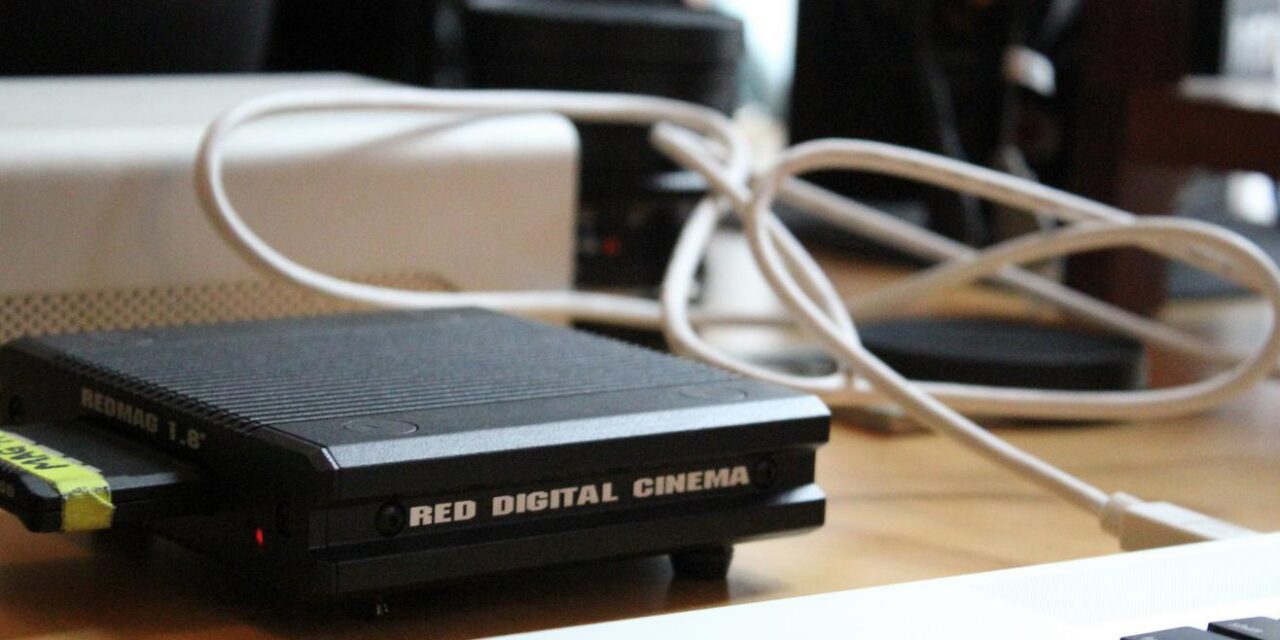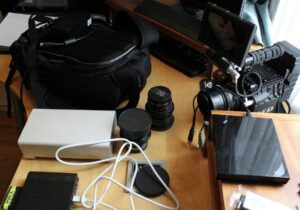I’ve made a conscious effort over the past few years to avoid getting too involved in the debate over whether or not we need 4K resolution or higher in digital cinema production. I refused to give this particular topic my time because I hadn’t worked in the higher resolution medium, that is until last spring when I directed a film shot in 5K. Although the film is not complete as of yet, we plan on finishing in 4K. More on that later.
Another reason I never wanted to get too involved in the “4K or not 4K” debate was because it has always been obvious to me that if you can go bigger, then you should, especially if you’re producing a work that will be presented to mass audiences, like a commercial or feature film. Future proof it. Not enough professionals are thinking about the future as far as their body of work is concerned, and instead are thinking with their wallets and that’s the ONLY reason this debate has gone on for as long as it has. If we had a culture where future proofing your work is of higher importance than the short term savings – there would be no debate.
Last year when I was looking for a DP with the proper gear, who could collaborate with me on shooting my feature, I received a lot of responses from DP’s who came in guns blazing about how I didn’t know what I was asking for by requesting a camera that shoots 4K or higher and that the request was a clear sign of my lack of knowledge on the subject. Mind you they had no knowledge of who I was or what my history has been, in regards to film production. I recognized right away that these were DP’s who had invested a great deal of money into camera gear that shoots no higher than 1080 (slightly less than 2K) and I got the impression that they’re pissed off they’ll be missing out on an opportunity to film someone’s movie, because they hadn’t invested in the higher resolution gear. That’s okay though, I’ve been down that road and that’s precisely the reason I got out of “shooting” and have generally stuck to directing and editing.
I received a similar e-mail last night, when I put an ad out for someone to help me pick up some b-roll. Here was what the individual, based out of the Washington, DC area, wrote: “4k or higher all hollywood releases in the final product is 2k. The sfx have not made the switch to 4k yet so a low budge in 4k aint even a requisite…” I will not disclose the name of the uninformed individual, but I will go as far as to say that these kinds of responses are common, and completely false. I’ve already begun the process of organizing my vfx workflow and everyone I’ve invited to come on board, thus far, is fully capable of handling the raw resolution. With that said, this is my film and I know how I want it handled. I know for a fact that it is possible for service providers to do what I want and I shouldn’t have to get into an e-mail based pissing contest because some bloke is living his life on disinformation. I’ll accept that less than half of the industry are finishing in 4K, that’s fine and a perfectly reasonable argument. But why should I give up the film’s future because the film industry hasn’t completely caught up with technological achievements? The industry, in and of itself, is comprised of penny counters who don’t think about the long term future. They never have and it is because of this, I have never, ever, taken my queue from what everyone else is doing.
Lately I’ve been following a discussion on LinkedIn, where a group of post-production professionals from around the world are having the same debate. Again, the nay sayers drop the money argument, the yay sayers seem to be thinking more about the future and the integrity of their body of work. Freelance writer/director Ross Thomas wrote, “I tend to shoot on RED for mostly web output… I do this because on aggressive shooting schedules it allows me to shoot wide and close shots simultaneously. For example, in this spot I directed for Adobe, most of the cuts to CU are done digitally.” I haven’t responded to Ross directly, but I can say that because I come from an experimental background, I totally dig the “out of the box” thinking of using the 4K sensor to shoot your wide and close shots at the same time. However, when it comes to a professional project, I feel like such a practice deprives the editor of the different takes and performances they need to build the best piece that their abilities allow. If I shot a feature using that process, I can almost guarantee I’d go nutter butters. First of all, I see that technique as being on par with the horrendous pan & scan of an anamorphic 35mm frame – to me, it just feels wrong. The downrez of the full image is why the 4K looks so beautiful on the final product – when you crop it and only take a small portion of the the shot, you’re sacrificing something superior for something inferior. While inventive at some level, I feel like it’s lazy film-making and depriving the client of something truly special. There were other professionals chiming in about this practice too, like Riza Pacalioglu, who saw it as a mechanism for professionals to “cheat their clients.” I requested a connection on LinkedIn with Riza. :)
Of course I am not saying Ross is cheating his clients, he’s made a good video spot for Adobe, but the technique is a cheat and although the client doesn’t know what they’re missing or may not care, I wouldn’t be able to sleep at night if I had pursued the project this way.
To bring this debate to an end, we need to change the professional culture. To change the culture, we first need to change the interpretation of what these pieces of media are, in the minds of the producers and the public. So many people on both sides see this work as disposable entertainment or soon to be an irrelevant or obsolete mechanism for information dissemination. I have always seen motion image production as an art form, from the American Lung Association PSA’s I directed to the feature film that I’m currently editing. All of it bares my name, my time and my energy and I’ll be damned if I’ll let money and penny pinching jackasses dictate the level of integrity of the technical specs of my work.








